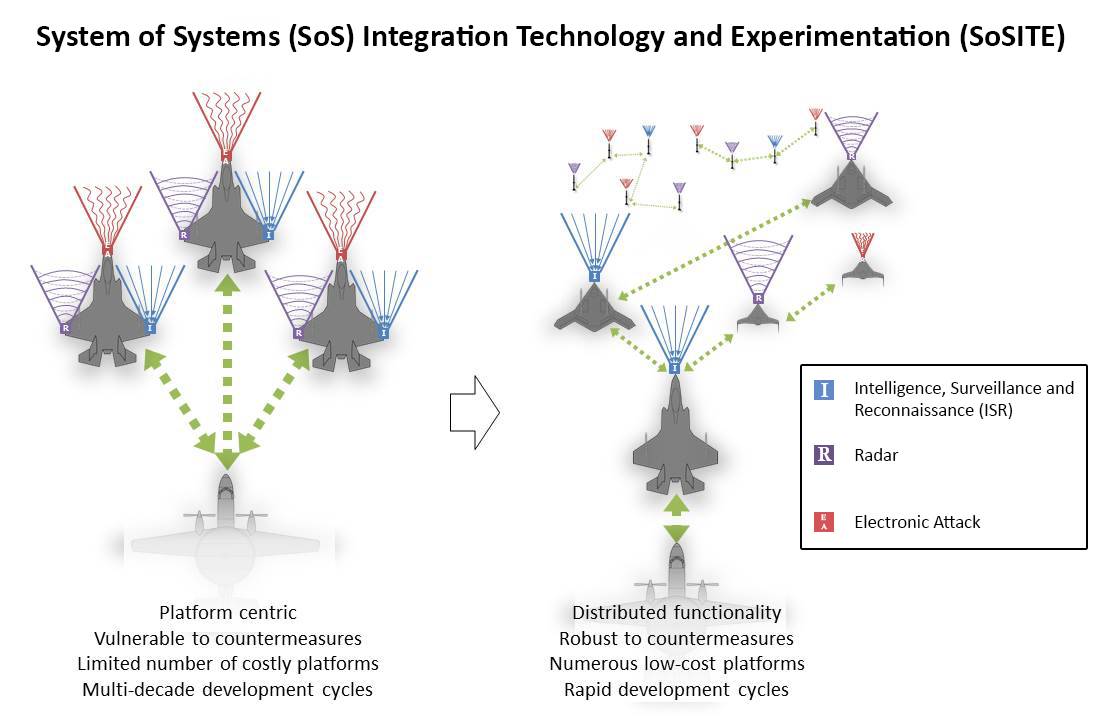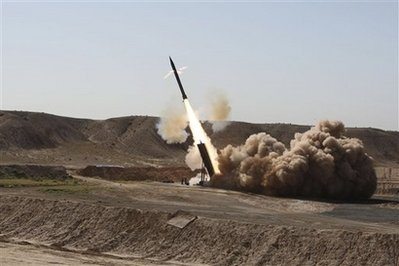For decades, the United States has successfully countered the threats of competitor nations by harnessing advanced technologies to create exceedingly robust and capable military platforms. But as advanced technologies have become more readily available to adversaries on commercial markets, the Nation’s focus on ever more complex weapons systems has become not just a strength but also a weakness.
Effective as they are, U.S. military systems today are often too expensive to procure in the quantities needed, and may take so long to develop that the electronic components they contain are obsolete by the time they become operational.
To address these challenges as they apply to airborne platforms, DARPA has kicked off the System of Systems (SoS) Integration Technology and Experimentation (SoSITE) program.
SoSITE aims to develop and demonstrate concepts for maintaining air superiority through novel SoS architectures-combinations of aircraft, weapons, sensors and mission systems-that distribute air warfare capabilities across a large number of interoperable manned and unmanned platforms. The vision is to integrate new technologies and airborne systems with existing systems faster and at lower cost than near-peer adversaries can counter them.
“It can take decades and cost billions of dollars to field or upgrade advanced airborne systems today,” said Nils Sandell, director of DARPA’s Strategic Technology Office (STO). “As a result, the modernization of subsystems in these complex platforms has not kept pace with the rapid advances in commercial technology. A system-of-systems approach could help overcome this inherent issue with high-cost, monolithic, multi-function platforms.”
SoSITE focuses on developing concepts and architectures for distributed air warfare, as well as the technical integration tools to make that possible.
The program plans to harness existing airborne systems’ capabilities and reduce the cost and development timeline for new systems by using an open-systems architecture approach. Open-systems architectures create common standards and tools for developing interchangeable modules and platforms that can be quickly upgraded and swapped out as needed.
This concept enables distribution of key functions, such as electronic warfare; sensors; weapons; battle management; positioning, navigation and timing; and data/communication links, across a variety of manned and unmanned platforms.
“We are working closely with the Services on their open-systems architecture initiatives,” said John Shaw, SoSITE program manager in STO. “We are developing technologies to make those architectures enduring and secure, including building in defenses against cyber attacks, enabling standards to evolve as technology advances while maintaining backward compatibility, and providing tools for more rapid system composition and testing.
If we are successful, the Services will be able to add or swap out capabilities across existing manned and unmanned platforms at lower cost and in shorter time. The goal is to plug modules that perform different airborne functions into any type of airborne platform and have them work seamlessly.”
SoSITE will take advantage of advances in miniaturization, increased capability and decreased cost of electronics, new algorithms and software technology, and advanced materials for creating innovative unmanned platforms. Cost savings may be realized by separating payload from platforms, thereby allowing defense planners greater flexibility in choosing cost-vs-capability tradeoffs for each.
“The potential benefit of separating payloads from platforms using open system architectures can be understood using the example of smartphone technology and apps,” Shaw said.
“The ecosystem for smartphones invites new and better apps by shifting significant portions of the development burden onto well-defined development tool kits; these allow app developers to create new capabilities and get them quickly into an app store for consumers to use.
“You don’t need to buy a new smartphone every time an app comes out with a new capability. SoSITE’s technology integration focus area will build the ‘under-the-hood’ verification and cyber-defense capabilities so airborne platforms can host interchangeable ‘app’ functions.”
DARPA has awarded contracts to develop concepts for system-of-systems architectures and tools to facilitate their more rapid integration and testing. Under those contracts, Boeing, General Dynamics, Lockheed Martin and Northrop Grumman are developing and analyzing promising system-of-system architectures and are designing plans for flight experimentation with these architectures. Apogee Systems, BAE Systems and Rockwell Collins are developing tools and technologies to enhance current open-system architecture approaches.











